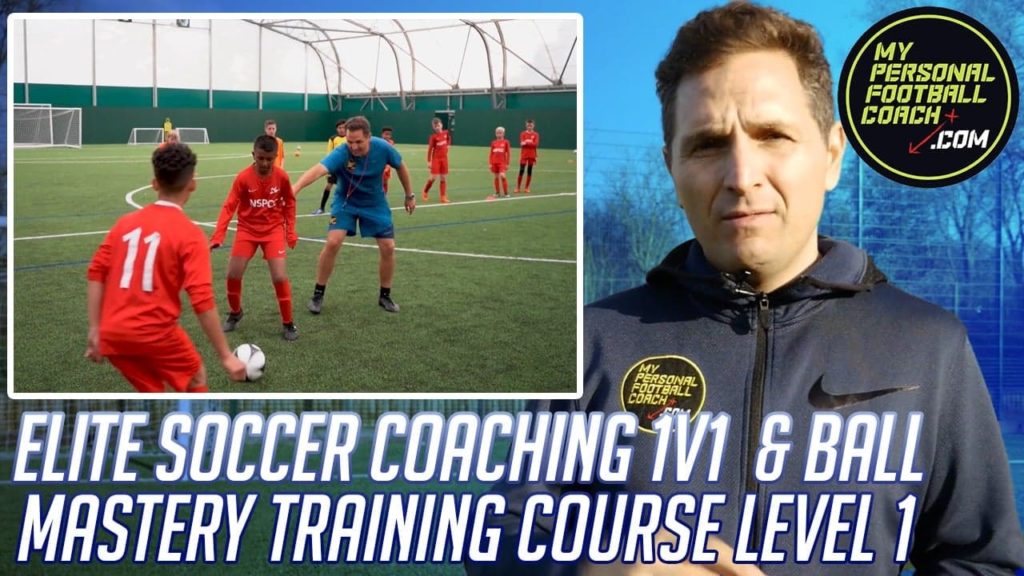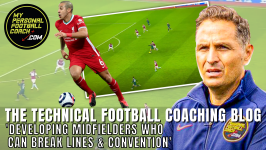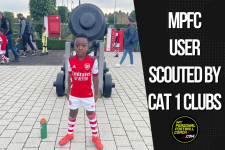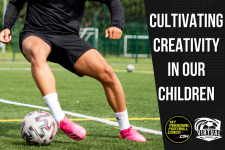Saul Isaksson-Hurst is an experienced Premier League Academy coach having spent 6 years at Tottenham Hotspur FC and 4 years at Chelsea FC’s Academy as a Foundation Phase skills specialist and is the founder of mypersonalfootballcoach.com where he is the director of coaching. Saul talks about how to use the ball mastery effectively with youth soccer players and the profound effect it can have on the players at all levels.
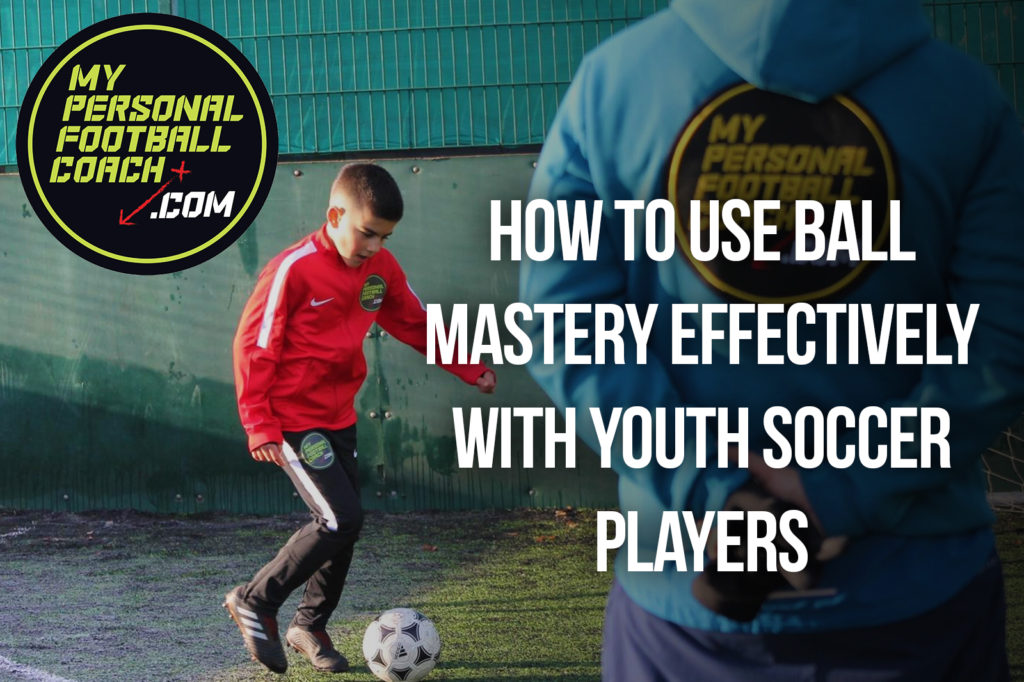
Iv’e been lucky enough to have been coaching for nearly 20 years now. A lot has changed in that time in terms of how I deliver but the main principles if what I want to achieve has remained the same…developing players who are masters of the ball who can dominate in 1v1 situations. The more experienced I get the more convinced that this is the key in youth development.
“I notice that many coaches still think that training technical skills can only be done during a warm-up or that it is only a small part of a larger whole. This thought process must be eliminated. Technique is the basis of everything”.
Pepeijn Lijnders
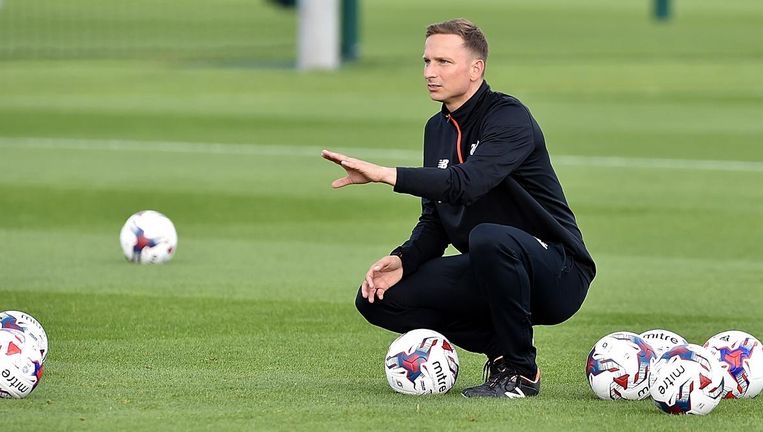
Pepeijn Lijnders Liverpool FC’s Assitant manager is a big proponent of Ball Mastery and 1V1
It’s great to see someone like Pepeijn Lijnders rising to such a prominent position in the game and still promoting the message about the importance of working on technique for players of all levels.
I’m incredibly fortunate to work with current Premier League Players, Full Internationals as well as some of the best young players in world football…I’ve also supported 100s of grass roots players from beginners to aspiring academy/pro players. The feedback is consistently the same, players feel ‘sharper’ and more ‘confident’ in game situations … all from working with the ball in unopposed situations.
Now unopposed work has almost become a dirty word in the current ‘games based’ climate. Now i’ll be honest, a few years ago, after completing the excellent FA Youth awards 1-4 I did question my methodology. In the face of so much research and messaging from the federation…working with players away from the game…was it really beneficial?
When the noise is constant on social media i think it’s impossible for it not to have an effect. Did I really have an evidence based approach?
I did however keep coming back to the most important evidence of all…the players! As mentioned all the players I work with kept coming back to me saying what a powerful impact our work had had on their games. Parents of younger players saying the difference in their children’s performance in matches was like night and day.
Max Aarons, Norwich FC is a player I have worked with for many years, he described our work together…
“It was taking my game to another level, I felt sharper than doing any group training”.
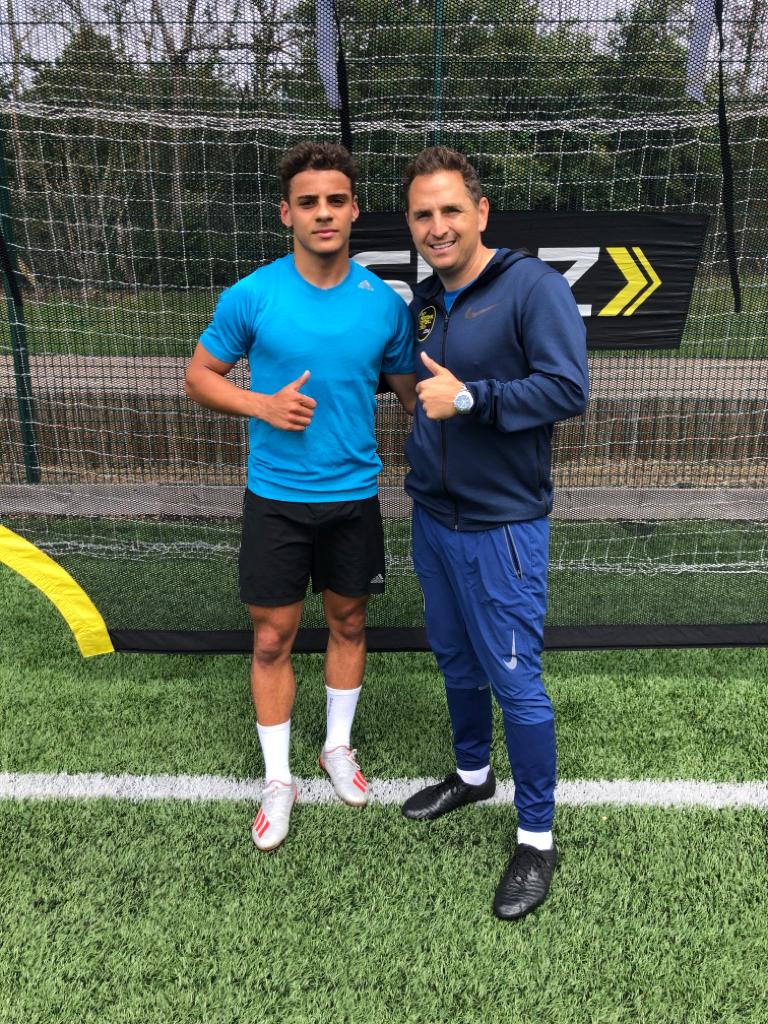
Norwich City’s Max Aarons started working with Saul as a 13 Year Old
This then led me to analyse my approach to the effective use of Ball Mastery and how that had evolved over the years and try and link that to some of the research about game based training.
As I mentioned earlier my work on the pitch has evolved over two decades. I’m always conscious of whatever I’m doing in individual or group training…what is the reason…what is the purpose…and importantly how is this linked to the game…how is this going to improve this or these players performances in the game.
Just this weekend I was lucky enough to watch a Premier League Academy Cat 1 fixture u13 game. One of the players I work with was playing. Now I know both of these clubs well. 1 has a very strong culture of Ball Mastery and 1v1 at the Foundation Phase. The other has more of a conventional team play/ games based approach. It was really interesting for me to see the difference in the players…how they reacted to the ball when in possession. The team with the culture of ball mastery and 1v1 were just much better on the ball…across the whole team. These players just moved better with and without the ball. Every time they received the ball they were able to twist, turn and evade…with varied success…but the intent and the ability was clear to see. The other team had much more conventional looking English players…physically very developed but less fluidity in their moment and much more straight line focused. There was much less flexibility in their hip and body movements.
Now the other team actually ran out winners in the second half but it was clear to see that it was more to do with their physically advantage rather than any technical one. This sums up much of English Football as the recruitment and development process often focuses more on maturation…the only issue is when these players grow older they are often found wanting…as other players catch up and their technical inadequacies catch up with them.
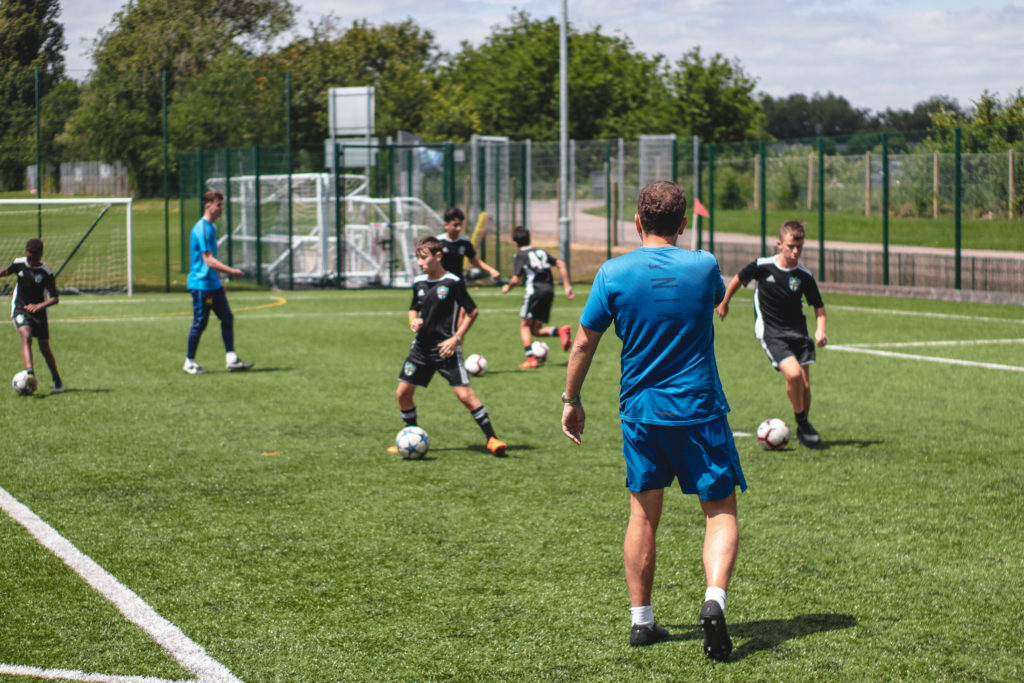
Ball Mastery can have a profound effect on the way players move with and without the ball.
Anyway, back to my work and the game. The more experienced I become the more important and vital the effective use of ball mastery with young soccer players can have on players movement. The majority of clubs I’m fortunate to visit have movement programmes for the players but very few actually have a ball mastery programme/strategy linked to this.
“Childhood offers a key time frame to learn and improve fundamental movement patterns and develop neuromuscular coordination” (Lloyd & Oliver)”
Looking back to the Academy game above…I could clearly see the difference in how players move when they are consistently doing quality ball mastery…their movement is just more fluid.
Movement programmes are key but surely so are ones with the ball. As mentioned my use of ball mastery has developed over the years…I now use purely functional movements within my ball mastery. Through my research I have found 8 core 1v1 skills/movements that are regularly used at the highest level. Now there are many more and I use these also but its key for me for young players to master these techniques and if they so wish but their own spin on them.
These movements are the basis of being able to to twist, turn and avoid players. Being able to cut and change direction with the ball and explode on both sides.
Now many will take about players developing these assets naturally…I don’t dispute that or stand in these players way…my argument is all players should have this capability and if we aren’t supporting them in developing these and giving them time on the ball to improve then we are failing.
“Motor skills are best developed with the supervision and guidance of expert practitioners.”
Ericsson & Pool, 2016; MacNamara et al. 2015
I think this is a pivotal point. Yes lets keep our multi sport movement programmes that help players dodge and move but let’s also include football specific dodging with the ball…let’s support our players developing a relationship with the ball. As a Ball Mastery specialist I can support players in not only developing functional 1v1 technique but also supporting the players in developing the body for the modern game. It’s not about creating ‘the ideal technique’ which many game based advocates criticise…its about developing the ideal technique for that player…everything has to be individualised.
I look at the current climate of game based coaching and I fear we have gone too far the other way. As mentioned on numerous occasions I’m a big advocate of a game based approach in team training although for me it has to sit next to a ball mastery and 1v1 programme. Its not about one or the other…these two should sit together. When you look at your session how much quality contact time with the ball are your players getting? It may only be 5 or 10 minutes but a quality Dynamic Ball Mastery programme will have and profound effect on your players.
Rene Meulensteen sums it up perfectly.
“So I had the Coerver approach for developing young, skillful, technical players and then Cruyff’s approach in how you let them play. If you put the two together you have: success formula”.
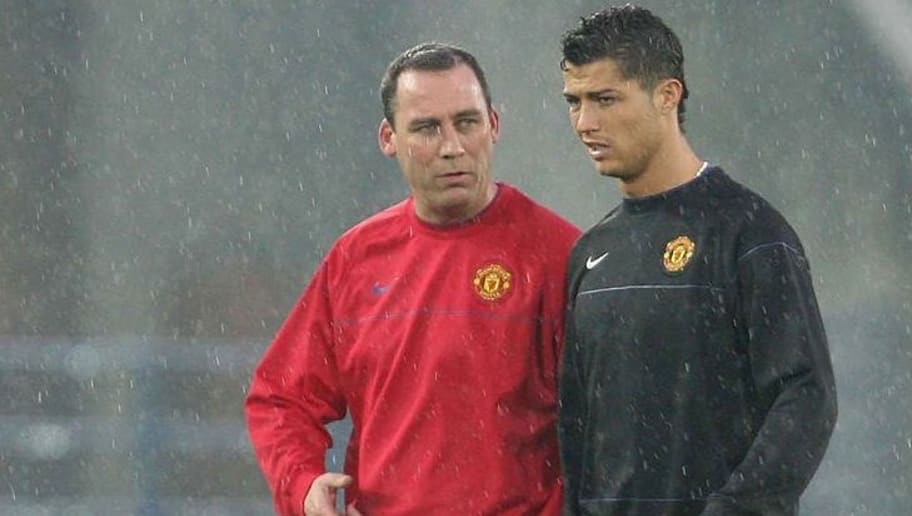
Rene Meulensteen started his career Man United as a ball mastery ad 1v1 specialist working with the younger players in the Academy.
If you put these two things together you have the perfect mix…like anything in life its about balance…just the right combination to find success.
As we move forward as coaches and our coaching courses and programme evolve, hopefully we can start to see the value of 1 player and 1 ball. The question shouldn’t be is this productive but when and where is the most effective and efficient way to get this work done.
Master the Ball Master the Game
Saul Isaksson-Hurst
Director of Coaching
Mypersonalfootballcoach.com
Do you want to understand more about ball mastery and how to use it?

